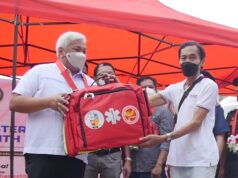Nurse Marilou Pajarillaga of the DOH’s regional epidiomology service unit here noted that while previous records indicated most of the victims were girls 15 years old and below, the updated statistics have indicated 54 percent of the dengue victims were male.
The latest reports also revealed one more dengue fatality this year, bringing the total to 41, she said, noting a fatality rate of 0.78 percent.
A total of 12 died of dengue in Nueva Ecija, nine each in Bulacan and Pampanga, seven in Bataan, two in Zambales and one each in Aurora and Tarlac, Pajarillaga said.
She also noted that the victims were aged from less than a month to 98, with the median being 13 years old.
“Of the total number of victims, 75 percent were below 19 years of age,” she also noted.
Pajarillaga said that the 5,201 dengue cases so far this year is higher than last year’s 2,055 cases. “That’s 153.1 percent higher,” she noted.
The updated records indicated that Pampanga had the most number of dengue cases at 1,899, followed by Bulacan with 1,169, Nueva Ecija with 821, Tarlac with 636, Zambales with 409, Bataan with 248, and Aurora with only 19.
Pampanga has consistently been on top in terms of the number of dengue cases this year in Central Luzon. She also explained that the latest statistics already corrected double entries from Bulacan.
Despite the high figures this year, Pajarillaga noted that dengue cases in the region are going down. She noted that from 603 last January, dengue cases peaked to 1,900 in July but declined to 871 in August and 473 in September.
She said she expected fresh reports from the DOH’s “sentinel hospitals” to be lower as the year ends. “Our reports on dengue are based only on the reports of cases on such sentinel hospitals, “ she added.




